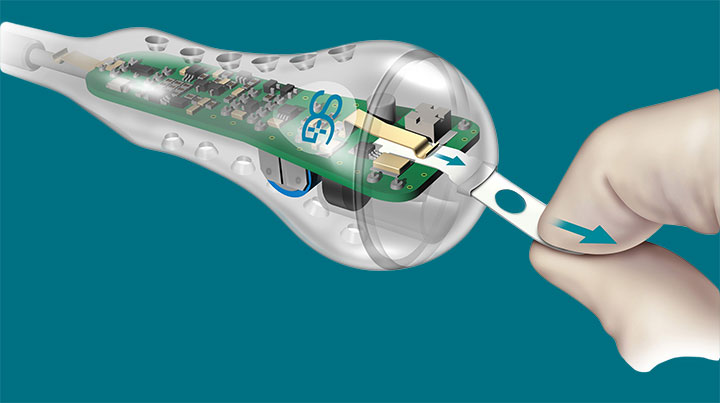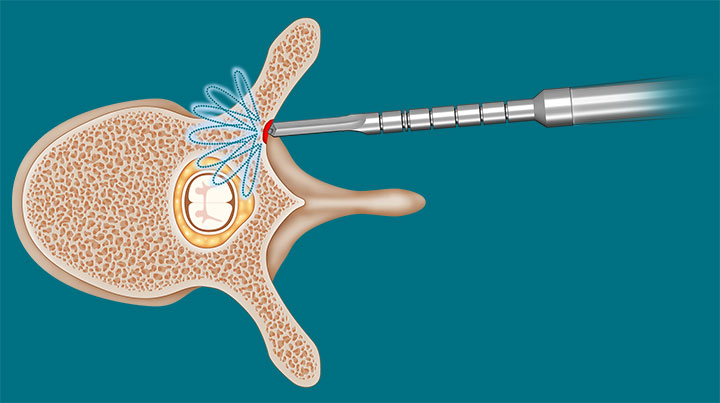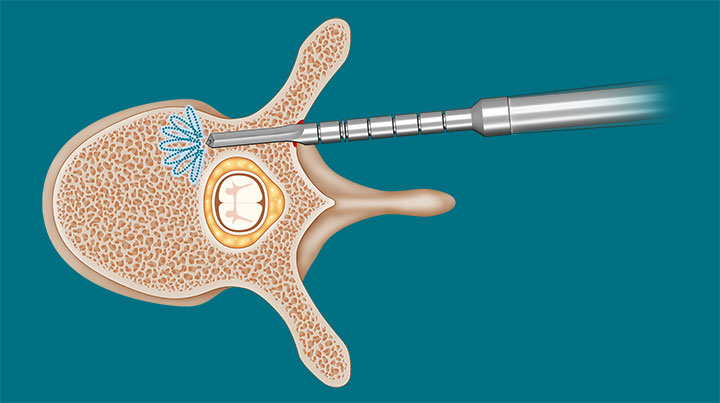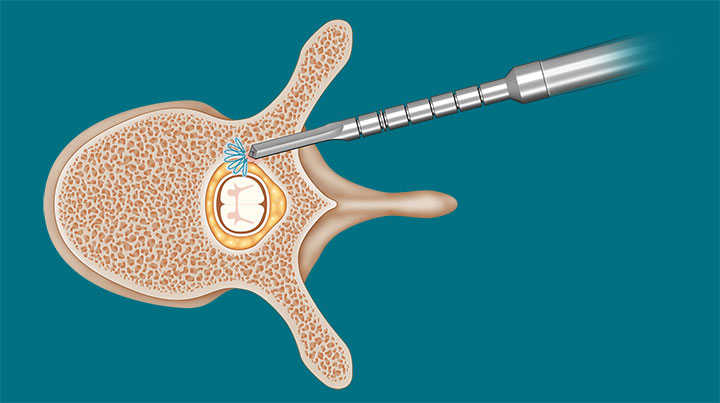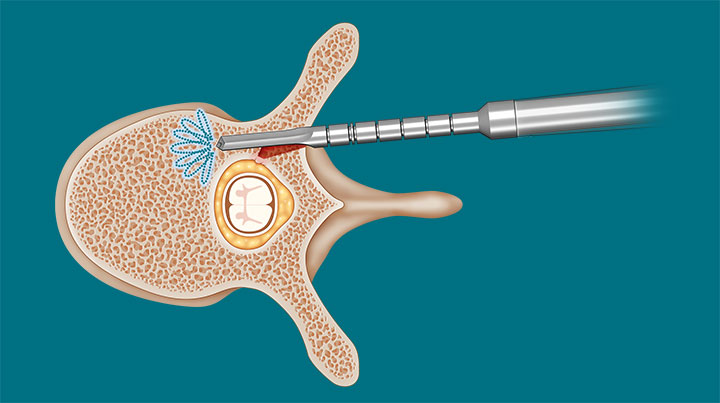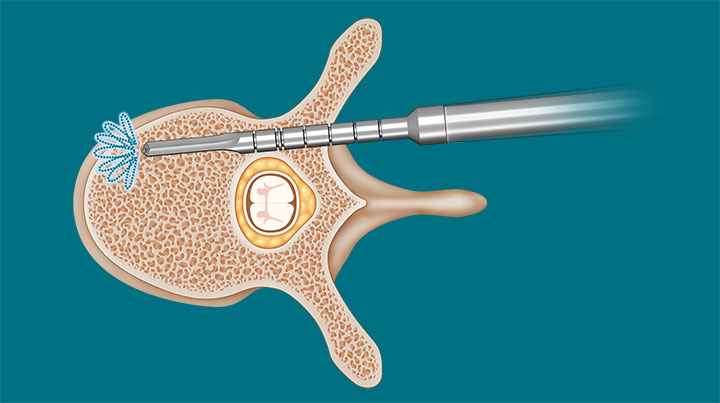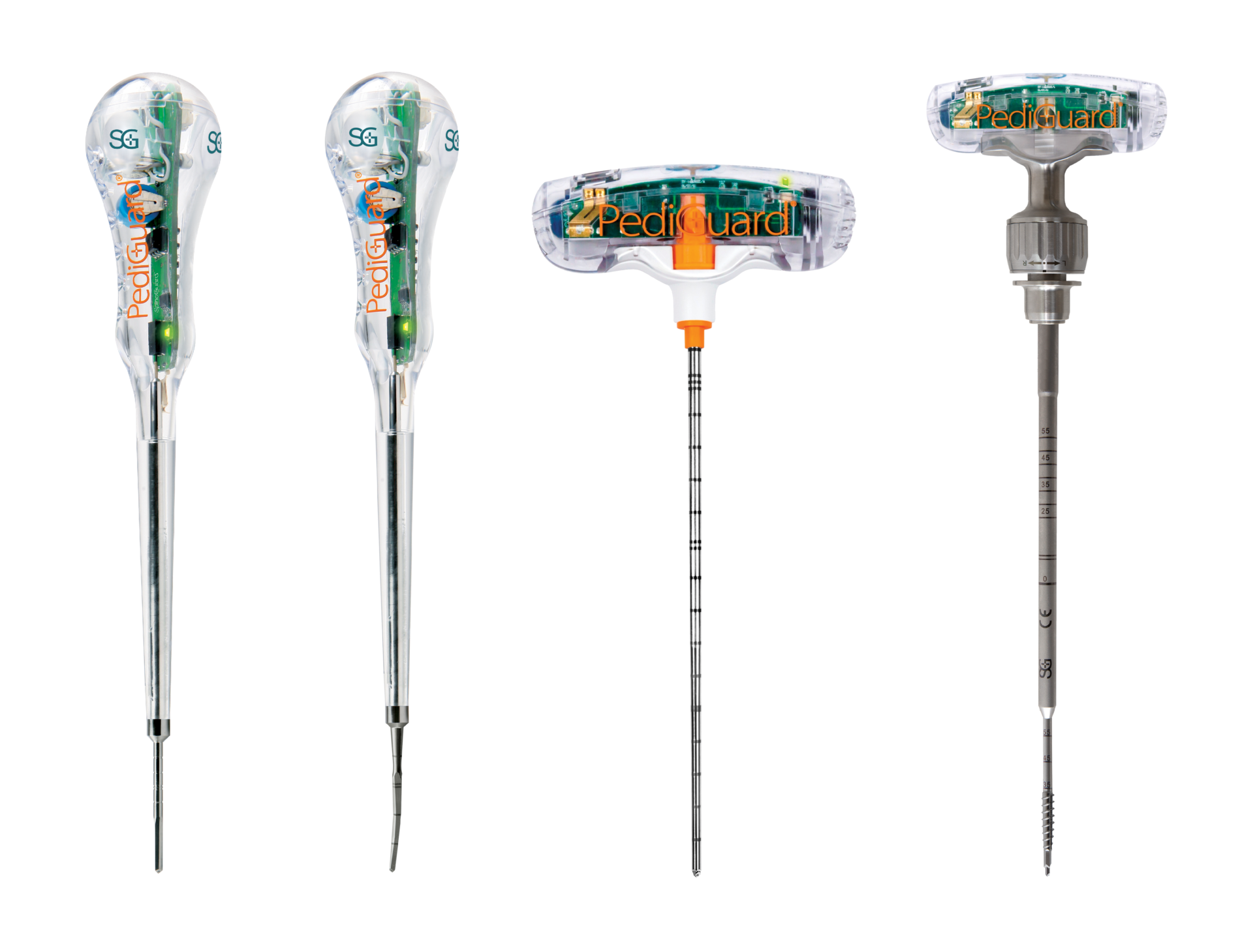SpineGuard
DSG Technology
Scientific Principle
DSG Technology underpins our PediGuard devices and is based on the principle of electrical conductivity. Electrical conductivity is the property of a material to conduct an electrical current. DSG uses 2 electrodes at the tip to create a detection field that evaluates conductivity 5 times/second.
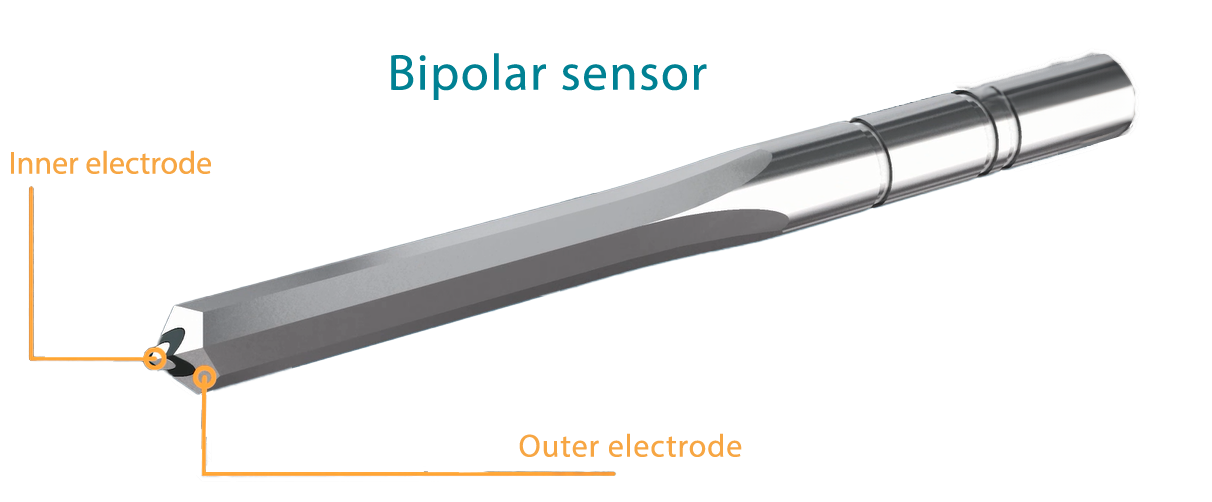
The emitted sound varies by type of tissue. This parameter allows for differentiation between various tissue types in real-time while drilling a pedicle prior to screw placement.
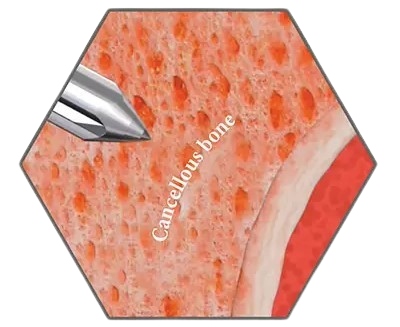
Cancellous Bone
Medium pitch, medium cadence
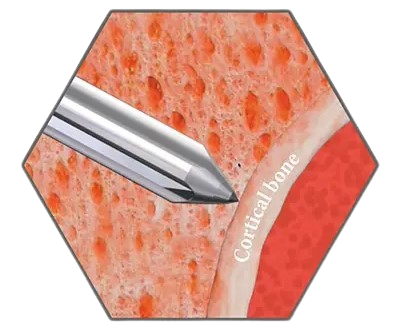
Cortical Bone
Low pitch, Low cadence
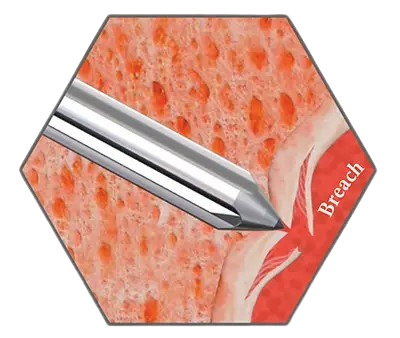
Soft Tissue/Blood
High pitch, high cadence
The Benefits of DSG Technology
Pedicle Screw Placement Accuracy
Continuous monitoring of electrical conductivity of the tissue at the tip of the PediGuard device allows for pedicle preparation with a high degree of accuracy:
- 97% screw placement accuracy
- 98% probability of breach detection
- 3-times fewer pedicle perforations than with free-hand technique
Note: see clinical data below.
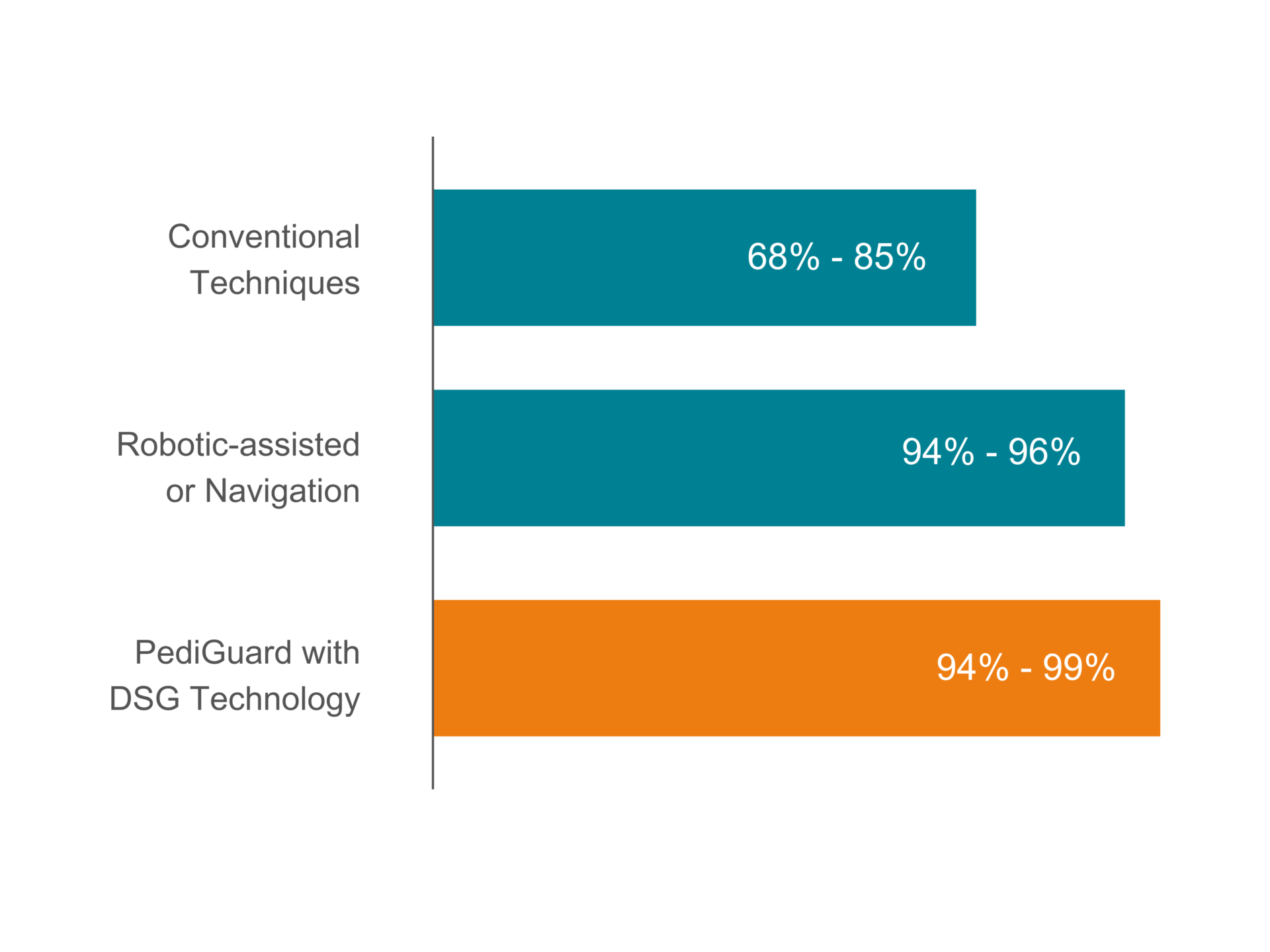
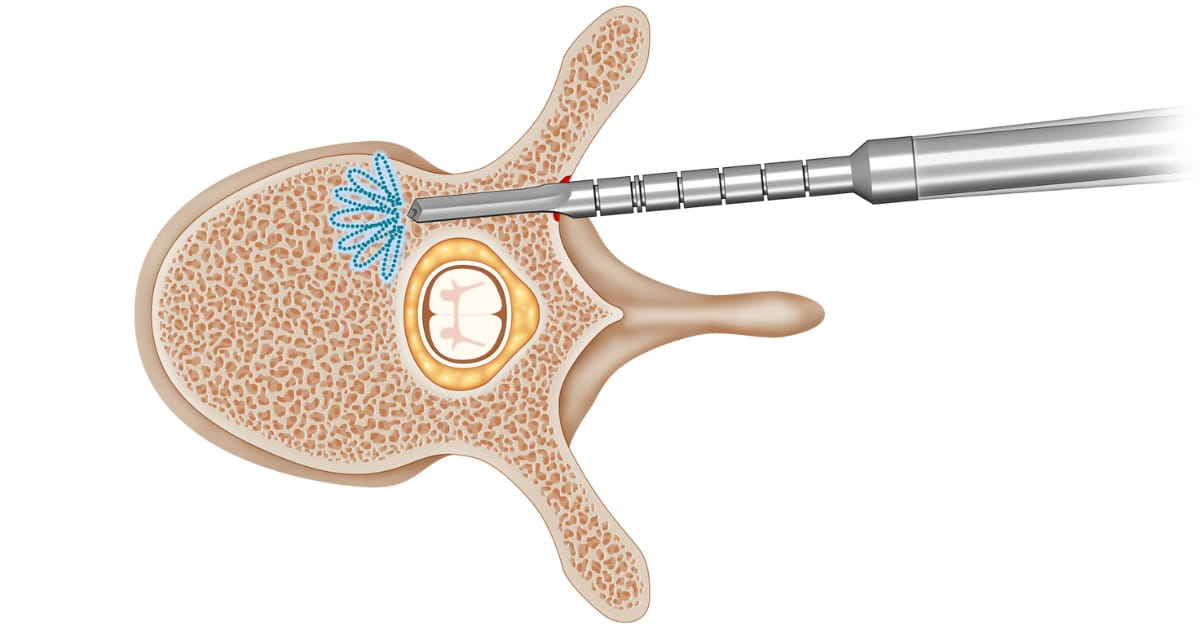
Real-Time Feedback
The bipolar sensor measures real-time changes in electrical conductivity of the tissue five times per second and allows redirection during pedicle drilling to avoid neural or vascular damages.
- 100% medial breach anticipation
- 98% overall breach detection
- 15% surgical time reduction during screw placement
Note: see clinical data below.
Reduction in Radiation Exposure
Greater reliance on fluoroscopy exposes the entire OR Team and patients to dangerous radiation. Fortunately, more spine surgeons are calling for the reduction of radiation in the OR. DSG Technology has proven to reduce radiation exposure to both the patient and the OR staff.
- 25-33% reduction in fluoroscopy shots
- 51% reduction in thyroid radiation exposure
- 73% reduction in radiation time in MIS surgery to the patient
Note: see clinical data below.
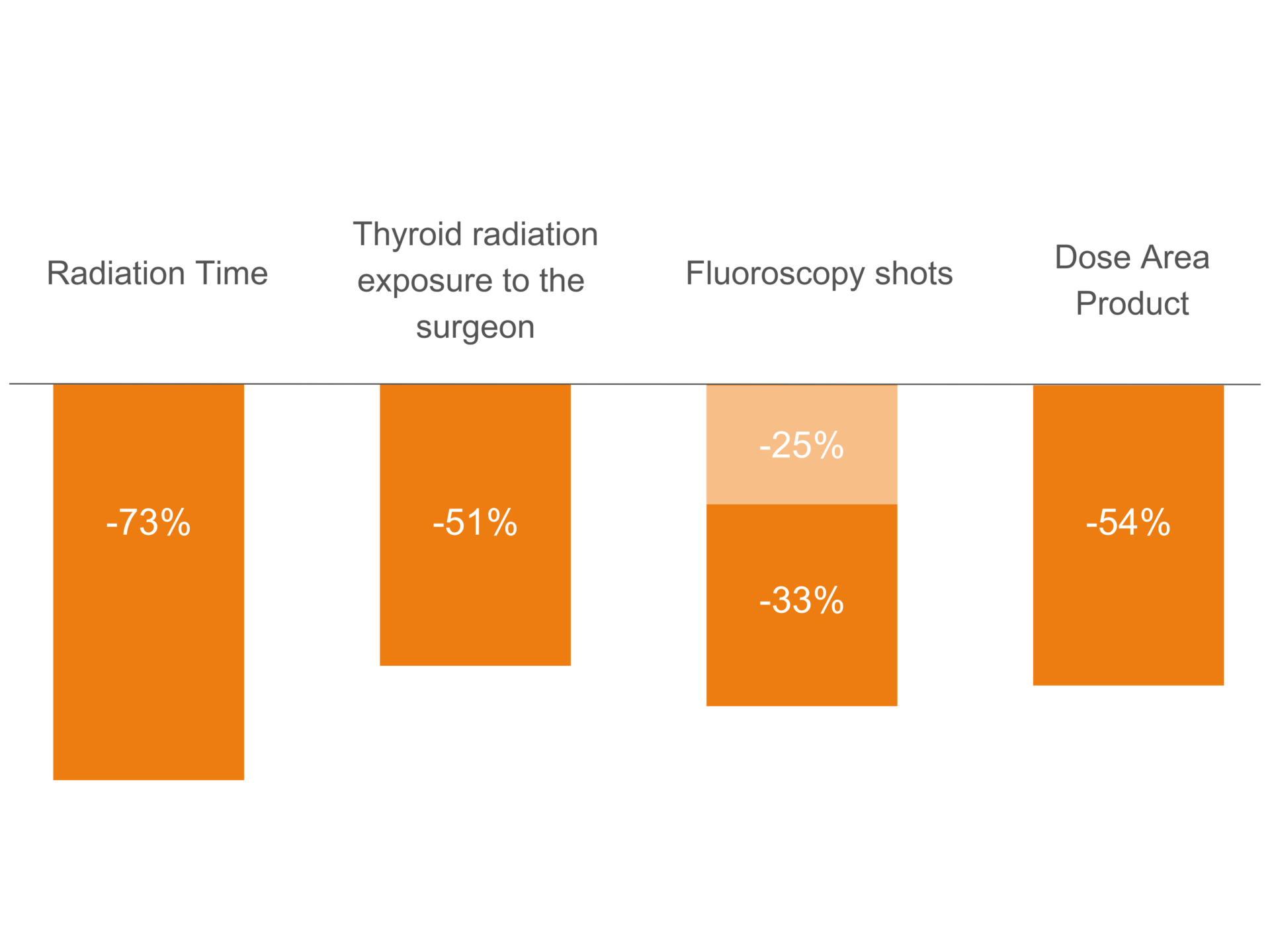
Surgical Technique
Drill & Listen
Advance the PediGuard probe into the pedicle along the target trajectory for screw placement and pay close attention to the audio feedback provided.
Interpret & Redirect
A change in pitch and cadence of the audio feedback indicates a change in the tissue around the tip of the PediGuard probe.
For additional information, please refer to the IFU and surgical technique provided with the PediGuard probes.
Clinical Evidence
Clinically proven technology
More than 100,000 surgeries across the globe and counting!
With mounting clinical evidence confirming its efficacy, PediGuard devices with DSG Technology, are becoming a compelling answer to the clinical needs associated with safe and accurate pedicle screw placement. PediGuard probes with DSG Technology have assisted spine surgeons in accurately placing over 500,000 pedicle screws worldwide.
Clinical Data
Clinical Research validates PediGuard probes in spine surgery
35 Major Peer-Reviewed Publications
With mounting clinical evidence confirming its efficacy, PediGuard devices, that integrate the DSG Technology, are becoming a compelling answer to the clinical needs associated with safe and accurate pedicle screw placement.
Screw placement accuracy and breach detection
- 97% screw placement accuracy including in osteoporotic patient (Bocquet 2005, Lubansu 2006, Chang 2009, Chaput 2011, Bai 2012, Heimen 2014, Suess 2016, Defino 2020, Zarate 2023)
- 98% breach detection, twice better than conventional technique (Bolger 2007)
- 100% medial pedicle breach anticipation (Williams 2014)
- 92.5% accuracy in complex deformity, upper thoracic (Allaoui 2018)
- 3-times less neuro-monitoring alarms (Ovadia 2011)
Radiation safety and surgical efficiency
- 73% reduction of X-Ray time in MIS (Lubansu 2011)
- 30% reduction of X-Ray shots in open surgery (Chaput 2011, Bai 2012)
- 15% surgical time savings during screw placement (Bai 2012)
Surgical education
- 58% breach rate reduction among residents (Syed 2014)
New applications and techniques
- 91% cervical spine lateral mass and pedicle screw placement accuracy (Darden 2016, Koller 2018)
- “The DSG technology is useful for an optimal positioning of bi-cortical screws in the lateral mass of C1” (Kageyama 2019)
- New technique with Sacro-Iliac fusion (Sandhu 2014)
PediGuard probes, that integrate the DSG Technology, have assisted spine surgeons in accurately placing over 500,000 pedicle screws worldwide.
Publications
The following articles published in reputed peer-reviewed journals validate the accuracy and benefits of the PediGuard Probes and DSG Technology:
Usefulness of a New Electronic Conductivity Device with a Pedicle Probe and a Multi-axis Angiography Unit for Inserting a C1 Lateral Mass Screw Safely and Tightly: A Technical Note
1. Kageyama et al, Neurologia Medico-chirurgica (25 Oct 2019, 59(12):523-528) Full text
Contribution of Dynamic Surgical Guidance to the Accurate Placement of Pedicle Screws in Deformity Surgery
2. Allaoui et al, World Neurosurgery (2018 Dec;120:e466-e471. doi: 10.1016/j.wneu.2018.08.105. Epub 2018 Aug 24.) Abstract
Characteristics of deformity surgery in patients with severe and rigid cervical kyphosis (CK): results of the CSRS-Europe multi-centre study project
3. Koller et al, European Spine Journal (2018 Nov 27. doi: 10.1007/s00586-018-5835-2.) Abstract
Osteotomies in ankylosing spondylitis: where, how many and how much?
4. Koller et al, European Spine Journal (2018 Feb;27(Suppl 1):70-100. doi: 10.1007/s00586-017-5421-z. Epub 2017 Dec 30.)10.1007/s00586-018-5835-2.) Abstract
Accuracy of a dynamic surgical guidance probe for screw insertion in the cervical spine: a cadaveric study
5. Dixon et al, Eur Spine J. (2017 April 26) Abstract
Control of Pedicle Screw Placement with an Electrical Conductivity Measurement Device: Initial Evaluation in the Thoracic and Lumbar Spine
6. Suess O al. Adv Med. (2016:4296294. Epub 2016 Sep 6.) Abstract
S2-AI screw placement with the aid of electronic conductivity device monitoring: a retrospective analysis
7. Sandhu et al, European Spine Journal (Apr;26(4):1149-1153. doi: 10.1007/s00586-016-4840-6. Epub 2016 Nov 14.) Abstract
Anticipation of vertebral pedicle breach through dynamic surgical guidance
8. Williams et al, Coluna Columna (2014: 210-213.) Full text
Independent assessment of a new pedicle probe and its ability to detect pedicle breach: a cadaveric study
9. Guillen et al, Journal of Neurosurgery Spine (2014 Nov; 21(5):821-5) Full text
Comparison of the Pedicle Screws Placement Between Electronic Conductivity Device and Normal Pedicle Finder in Posterior Surgery of Scoliosis
10. Bai et al, Journal of Spinal Disorders & Techniques (2013 Aug;26(6):316-20.) Abstract
Reduction in Radiation (Fluoroscopy) While Maintaining Safe Placement of Pedicle Screws During Lumbar Spine Fusion
11.Chaput et al, Coluna/Columna (2013, vol.12, no.2, p.138-141. ISSN 1808-1851) Abstract
Reduction in Radiation (Fluoroscopy) While Maintaining Safe Placement of Pedicle Screws During Lumbar Spine Fusion 2
12. Chaput et al, SPINE (2012 Oct 1;37(21):E1305-9.) Abstract
The Contribution of an Electronic Conductivity Device to the Safety of Pedicle Screw Insertion in Scoliosis Surgery
13. Ovadia et al, SPINE (2011 Sep 15;36(20):E1314-21) Abstract
Electrical conductivity measurement: a new technique to detect iatrogenic initial pedicle perforation
14.Bolger et al, European Spine Journal (2007 Nov;16(11):1919-24. Epub 2007 Jun 30.) Full text
A preliminary study of reliability of impedance measurement to detect iatrogenic initial pedicle perforation (in the porcine model)
15. Bolger et al, European Spine Journal (October 2005, Volume 15, Issue 3, pp 316 – 320) Abstract
Presentations
Data from the clinical research of the PediGuard probes was presented at the following scientific/clinical society meetings:
Does The Use Of Dynamic Surgical Guidance Assist With Accurate Pedicle Screw Placement In Patients With Osteoporosis Or Osteopenia?
1.Defino et al. 2015. 15e Congresso Brasileiro de Coluna. SpineWeek, 2016. Singapore.
Analysis of Cervical Screw Placement Accuracy and Fixation in 137 Patients with Focus on Patients with Cervical Deformity using an Electrical Conductivity Device (ECD)
2. Koller et al, CSRS-NA Annual Scientific Meeting Poster (December 2014).
Prospektive Untersuchung der Schraubenpositionierung bei Spondylodesen zwischen Bildwandler gesteuerter (Standard) und Schraubenplatzierung mittels induktivem Pfriem.
3. Heimen et al. J. DWG annual meeting. Congress Center Leizpig, Leizpig, Germany. 11-13 Dec. 2014. Oral presentation:
Prospective Evaluation of a Free-Hand Electrical Conductivity Measuring Device to Reduce Radiation Exposure during Fluoroscopically Assisted Open or Minimally Invasive Pedicle Screw Arthrodesis
4. Lubansu et al, Eurospine Annual Scientific Meeting Poster (October 2011)
Clinical application of a specialized hand held pedicle drilling tool for pedicle screw placement in thoraco-lumbar fusions
5. Chang et al, AANS Annual Scientific Meeting Poster (2009)
Prospective evaluation of the interest of a free-hand electrical conductivity measuring device to reduce radiation exposure during fluoroscopically assisted pedicle screw fixation
6. Lubansu et al, SFCR Annual Scientific Meeting Poster (2008)
Pedicle screw placement in spinal surgery at lumbar level: interest of guidance by conductivity measurement in the placement of 104 pedicle screws
7. Bocquet, Eurospine Annual Scientific Meeting Poster (October 2006)
The Use of an Electrical Conductivity-Monitoring Device (ECMD) Shortens the Learning Curve for Accurate Placement of Pedicle Screws: A Cadaveric Study
8. Syed, et al, CNS annual meeting (2014) and SRS annual meeting (2015)
Vous avez des questions ?
